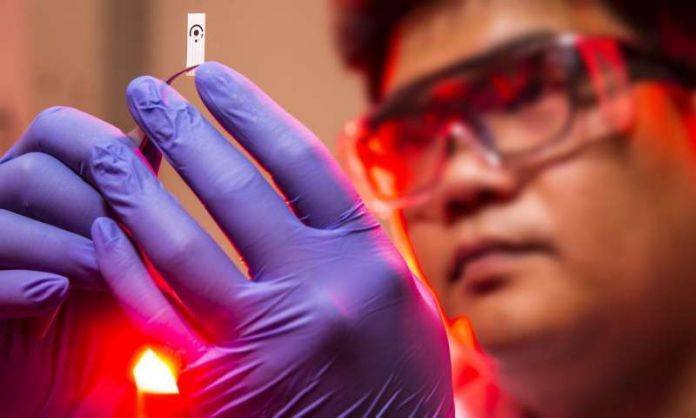Diabetes patients have low insulin levels. Means, they always need to check their glucose or blood sugar levels to prevent further chronic health complications. This causes physicians to develop new technologies to monitor glucose levels. But, they are expensive due to the use of precious metals like platinum. Scientists from the University of Wollongong’s (UOW) Institute for Superconducting and Electronic Materials (ISEM) have developed a copper film. This new copper based sensor is capable of measuring glucose levels from body fluids other than blood. It consists of sponge-like porous structure, which instantly and precisely detects glucose in salt-based fluids.
Professor Yusuke Yamauchi said, “Glucose sensors based on copper have been intensively studied, owing to the material′s good conductivity, low cost, and superior performance.”
“Precious metals like gold and platinum have very good conductivity. But they are very expensive. So, we wanted to focus on more abundant and cheaper metals,” he continued.
The main component copper was hard to adjust into porous structures. Because it oxidises easily when it exposes to air. Thus, it highly (The same reason for the green colour of the statue of liberty.) This metal does not reduce easily in solutions and also difficult to deposit consistently onto substrates.
These can be attached to a substrate by using a method like electroplating. Thus, UV light melts the polystyrene centres by leaving extremely tiny holes. This forms a porous copper film with sponge-like structure. While experiment, the film has high selectivity. It reacts with glucose without interference from other acids and sugars that present in sweat.
Yamauchi said, “The sponge-like porous structure greatly increases the surface area. Therefore it enhances the sensitivity required to trigger an electrochemical signal.”
“The extraordinary sensing performance of the copper film is probably attributed to its intrinsically good reaction toward glucose oxidation. This makes this copper film a good candidate for the direct detection of glucose. It fulfills the requirements of diverse applications, such as diabetes management.”
According to scientists, “The copper film can be used in a wearable sensor or a smartwatch. It provides continuous glucose readings to the wearer, which sent via wirelessly to their doctor. The cheap materials also make it ideal for use in remote areas where access to clinics and health specialists is difficult.”
The present success paves a new way for the preparation of porous materials from abundant metals for diverse applications and at low cost.
Recommended:
- The Insulin pill can lower diabetes, blood sugar level
- 7 ways to keep control your blood sugar forever
- Mobile technology help in prevention of diabetes: Study
- New class of artificial proteins created to treat cancer and diabetes
